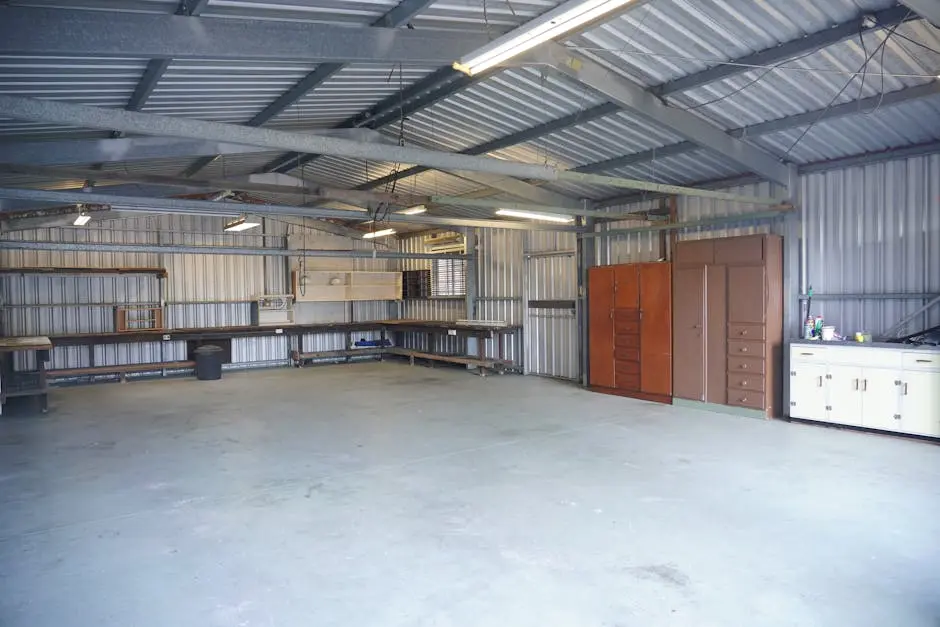info@baysideclosets.com

Are Garage Cabinets Easy to Install?
Installing garage cabinets might seem daunting at first, but with the right tools and knowledge, it can be a simple and rewarding task. Whether you’re a DIY enthusiast or a newbie, this guide will walk you through the process.
Understanding Types of Garage Cabinets
Garage cabinets come in various styles, each designed to meet specific storage needs and preferences. The most common types include wall-mounted, freestanding, and modular systems. Wall-mounted cabinets are perfect for saving floor space and are excellent for storing lighter items. Freestanding cabinets, on the other hand, offer versatility as they can be easily moved around, which is great for those who like to frequently reorganize their garage space.
Modular cabinets bring the best of both worlds, offering customization options that let you create a storage solution tailored to your specific needs. They’re particularly popular because of the ease with which they can be expanded or reconfigured as your storage needs change. Inset cabinetry is also a growing trend for those interested in a more traditional and seamless appearance, as highlighted in period home cabinetry design.
Essential Tools and Materials Needed
Before diving into the installation process, it’s crucial to gather all necessary tools and materials. Basic tools like a drill, level, tape measure, and stud finder will be your best friends during this project. You’ll also want to have screws, brackets, and wall anchors on hand, especially for wall-mounted cabinets.
If you’re installing inset cabinets, some tools might differ slightly to accomodate their unique design features. For instance, you might want to use specific hardware to ensure your cabinetry retains that timeless, flush look. Whether you opt for inset, freestanding, or mounted options, having the right tools will streamline the installation, making it a smooth and efficient process.
Preparing Your Garage Space
Before installing your cabinets, preparing the space is an essential step that determines how smoothly the installation will proceed. Start by clearing out the area where the cabinets will be placed. Ensure there are no obstructions like old shelves or protruding nails that may interfere with installation.
Accurate measurements are vital for a perfect fit. Measure your walls, paying close attention to the height and width available for your cabinets. Don’t forget to account for door swings and existing infrastructure that may affect where and how cabinets can be placed. An organized prep process makes positioning and securing the cabinets significantly easier, as explained in more detail in our guide on DIY garage shelving projects.
Step-by-Step Installation Process
Ready to start the installation? Begin by marking the wall where the cabinets will be affixed. Using a stud finder, locate studs in your walls for secure mounting points. It’s recommended to use wall anchors if stud placement doesn’t align with cabinet mounts, ensuring stability.
Attach brackets or mounting rails first, making sure they’re level. Take your time to meticulously adjust and measure because these will hold the cabinets’ weight. Then, place your cabinet unit against the wall, align it with the pre-installed anchors or studs, and secure it using screws or bolts. For modular systems, it’s a matter of connecting defined parts per the instructions, ensuring each segment is tightly fitted to avoid gaps and unsteadiness.
Common Challenges and Solutions
Even with the best preparations, installing garage cabinets can present unique challenges. Uneven garage floors, for example, can lead to misalignment. The solution is to use shims or adjustable feet for freestanding units, which help in achieving a balanced setup.
Wall obstacles can also pose a problem. Pipes, mysterious wires, or dense materials in the wall that your stud finder may not detect could complicate the installation. In these cases, consulting with a professional may prove invaluable. You can also explore our FAQs for insights and troubleshooting tips related to unexpected hitches during installation.
Remember, patience and precision are key. Taking the time to address small issues in the moment can prevent significant headaches in the future, preserving both the aesthetic and functionality of your cabinetry.
Maintenance Tips for Longevity
To ensure your garage cabinets stand the test of time, regular maintenance is crucial. Start by keeping the surfaces clean and free from dust and grime, which can build up and affect the cabinets’ appearance and operation over time.
Inspect hinges and handles regularly to tighten any loose fittings. This prevents wear and tear that leads to bigger issues like sagging doors or detached handles. For cabinets made from metal, a light coat of rust-inhibitor spray annually is wise to fend off rust, especially in humid environments.
Wooden cabinets may need occasional refinishing or re-sealing to keep them water-resistant and robust. By investing a little time and effort into care, you can maintain their style and function effectively. Explore more DIY solutions for keeping storage neat and lasting.
Conclusion: Ready, Set, Install!
With the right preparation and approach, installing garage cabinets can be a straightforward and fulfilling project. Transform your garage into a neat, organized space and enjoy the added functionality.



